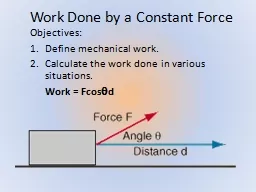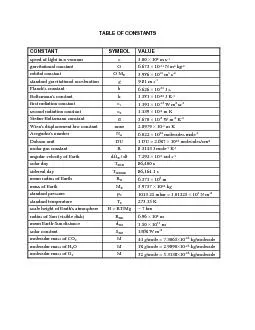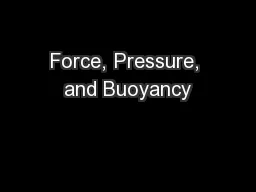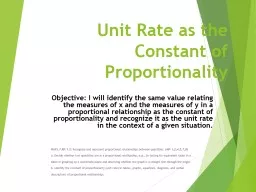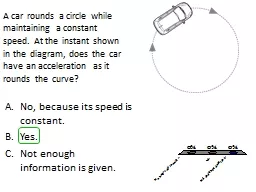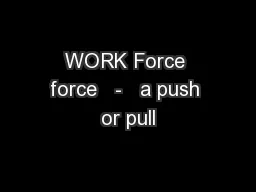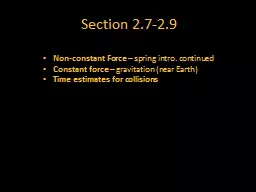PPT-Work Done by a Constant Force
Author : tatiana-dople | Published Date : 2017-07-02
Objectives Define mechanical work Calculate the work done in various situations Work Fcos d Defining work The Three Requirements for Work Force displacement
Presentation Embed Code
Download Presentation
Download Presentation The PPT/PDF document "Work Done by a Constant Force" is the property of its rightful owner. Permission is granted to download and print the materials on this website for personal, non-commercial use only, and to display it on your personal computer provided you do not modify the materials and that you retain all copyright notices contained in the materials. By downloading content from our website, you accept the terms of this agreement.
Work Done by a Constant Force: Transcript
Download Rules Of Document
"Work Done by a Constant Force"The content belongs to its owner. You may download and print it for personal use, without modification, and keep all copyright notices. By downloading, you agree to these terms.
Related Documents

